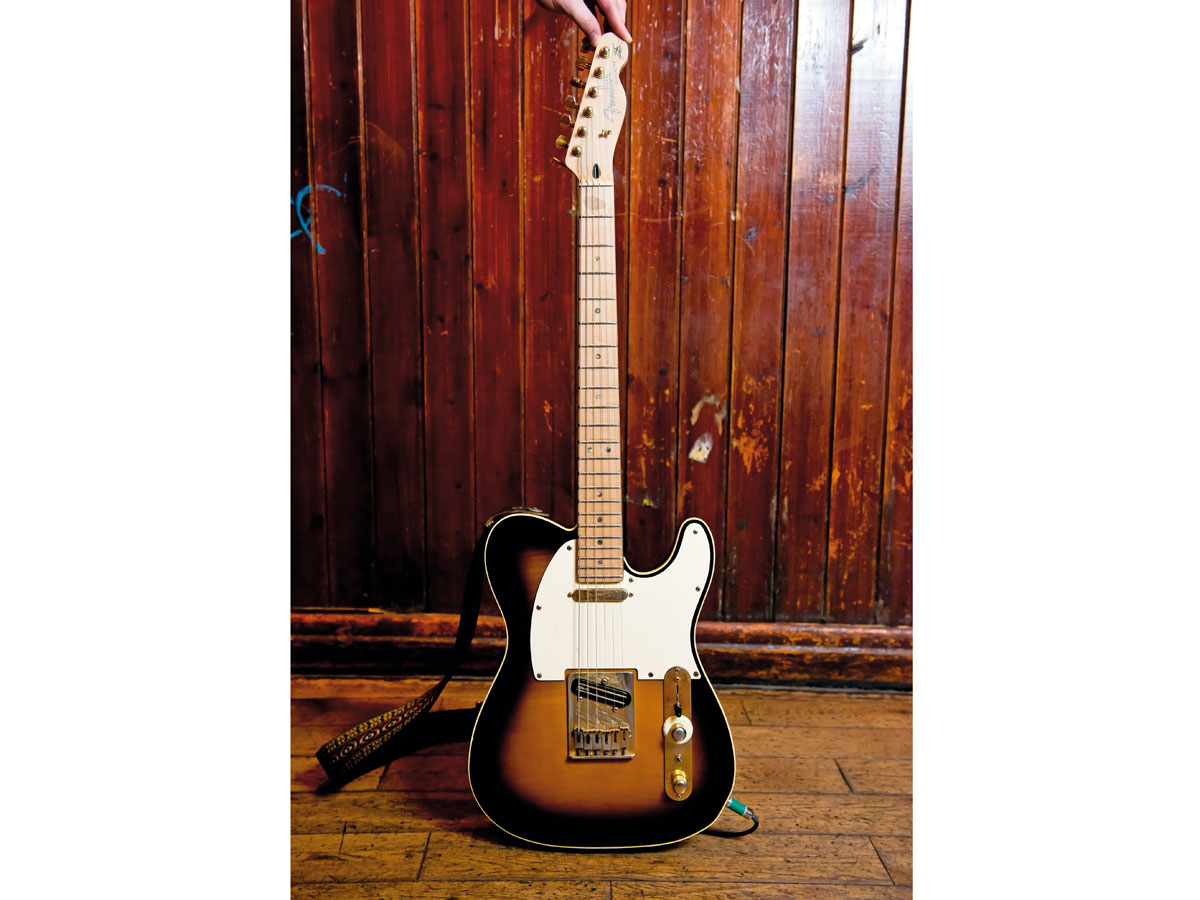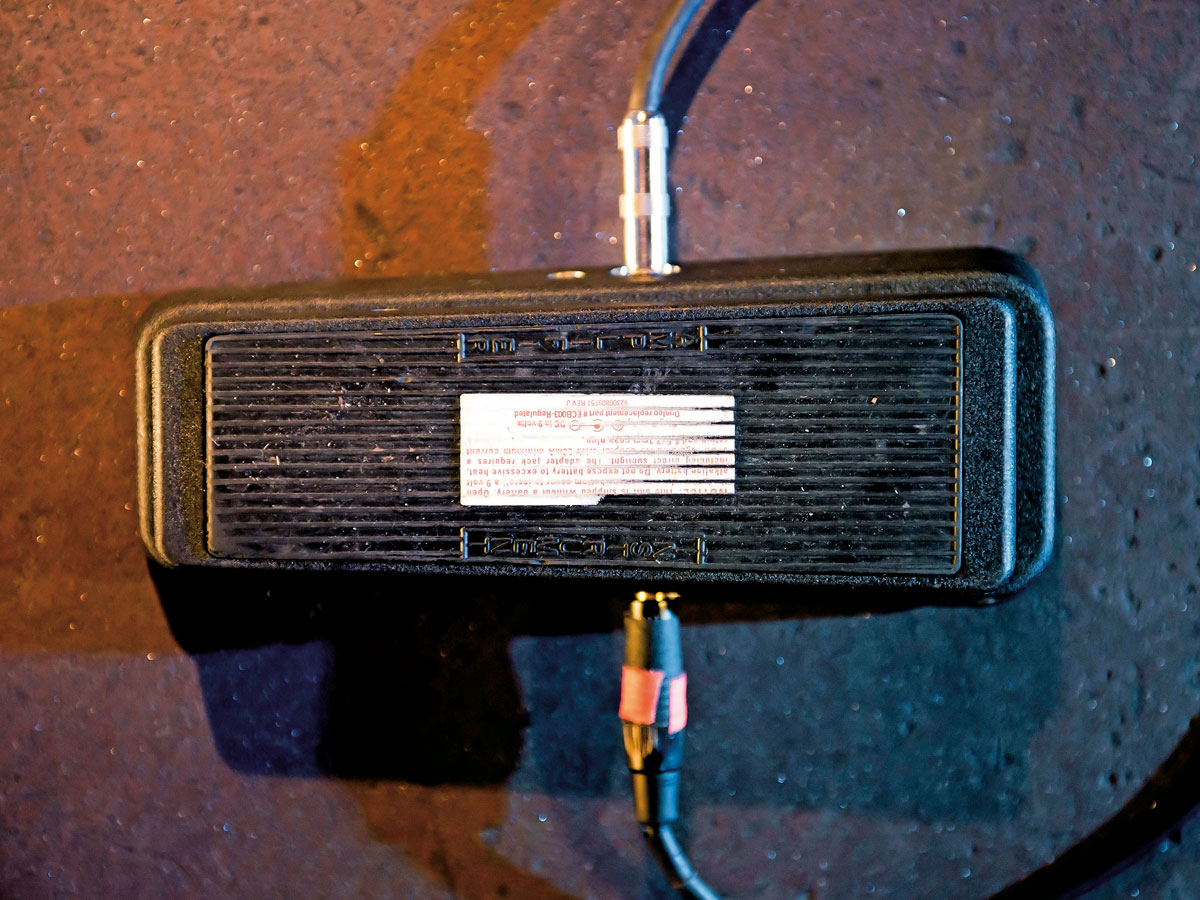Rig tour: Richie Kotzen of Winery Dogs
A forensic explanation of cunning custom rig

Introduction
He's spent time on the road with everyone from Poison to Mr Big and, now, the best part of a year with Mike Portnoy and Billy Sheehan as hard-rocking power trio The Winery Dogs. What Richie Kotzen doesn't know about live tone, ain't worth knowing.
Imagine our surprise, then, when we turned up for a guided tour of his rig and found it consisted of no more than five items. ‘Convenience without compromise’ is Richie’s, err, ‘dog-ma’, so while things may look simple from a distance, look closer and you’ll discover there’s some cunning custom gear at work.
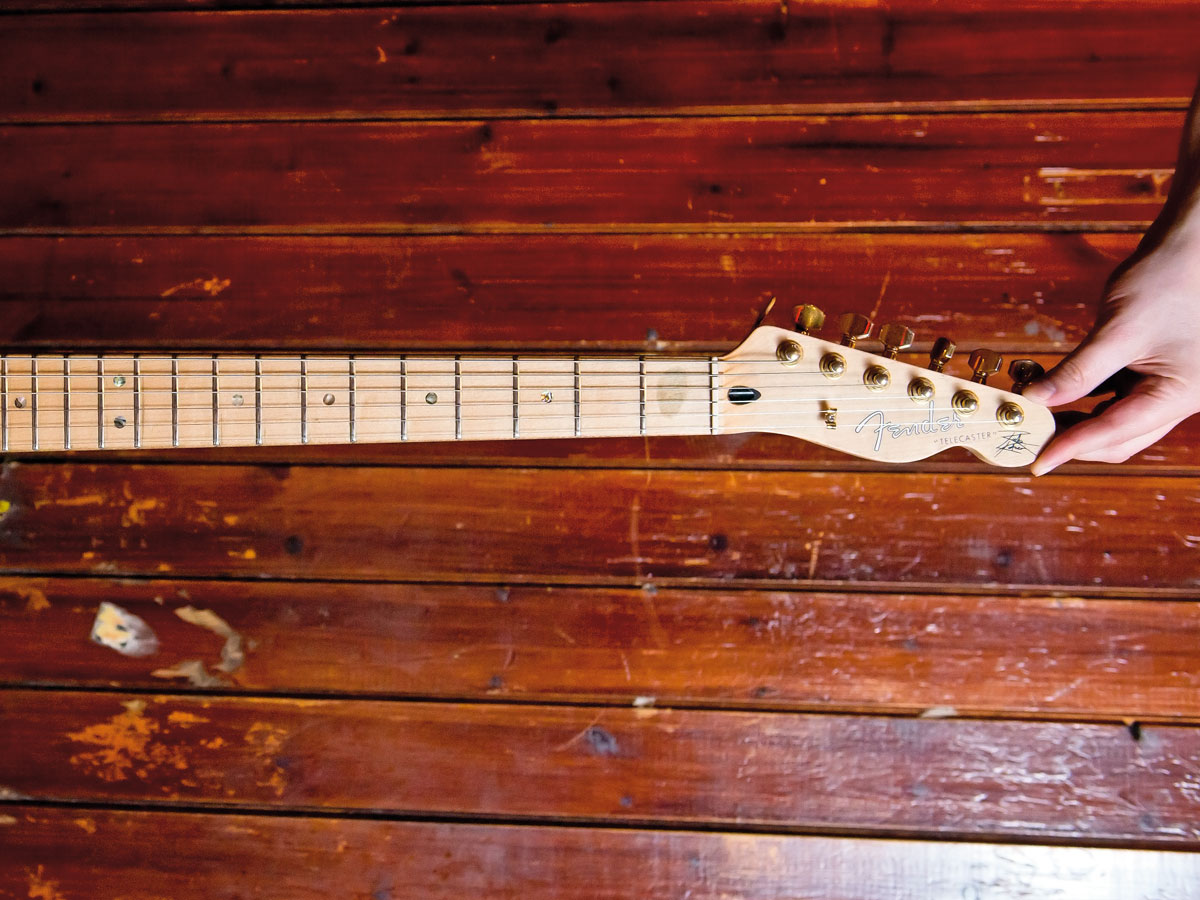
Neck
“First of all, the neck. It’s a maple neck and it’s thicker than your average Telecaster.
"We spent a lot of time getting the dimensions that I wanted - something that I felt fit my hand - and we settled on this [a large C-shape, in satin urethane finish]. It has large frets, I think they’re called 6100s [aka Jumbo frets].”
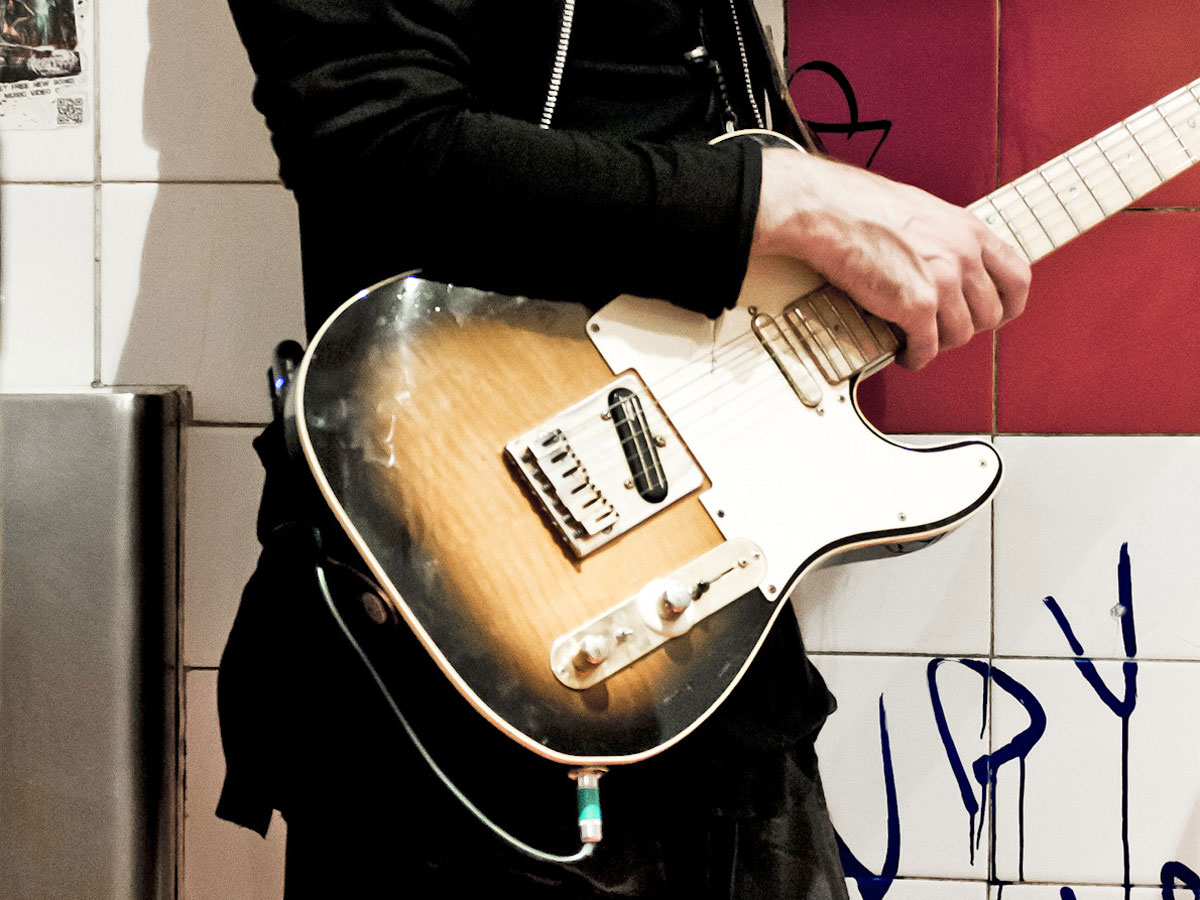
Body
“As far as the body goes, there’s a slight [forearm] contour that’s normally not found on the Telecaster.
"And then, on the back, it’s comfort cut, more like a Strat, but we put it on the Tele because it makes it more comfortable to play. As for the wood, it’s a flame [maple] top and a swamp ash back.”
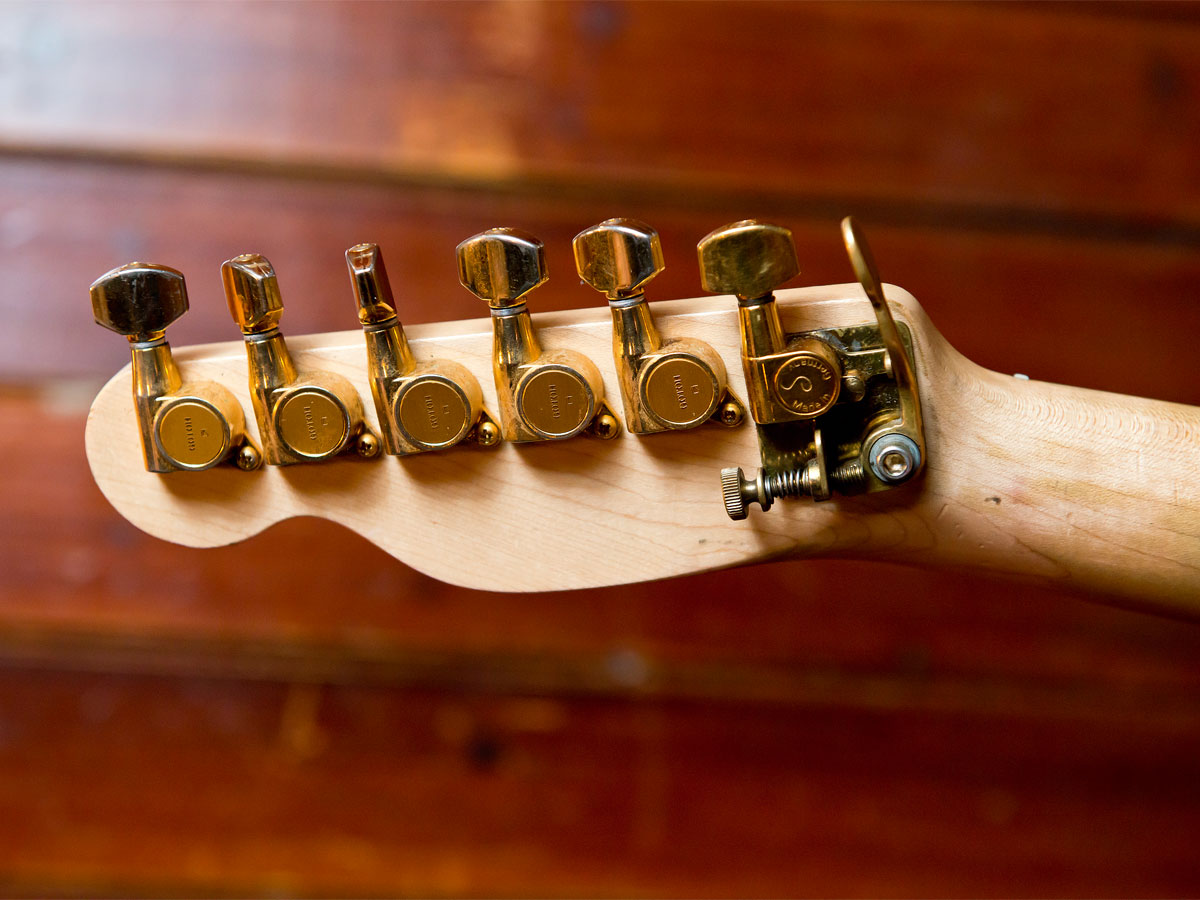
Hipshot GT2 Electric XTender
“Next, if you look at the headstock, you’ll notice a drop-D tuner [a levered tuning peg that when engaged, drops the sixth, low E string a full step down to D].
"It’s more commonly seen on a bass guitar, but I wanted one here. Like the rest of the hardware, it’s in gold.”
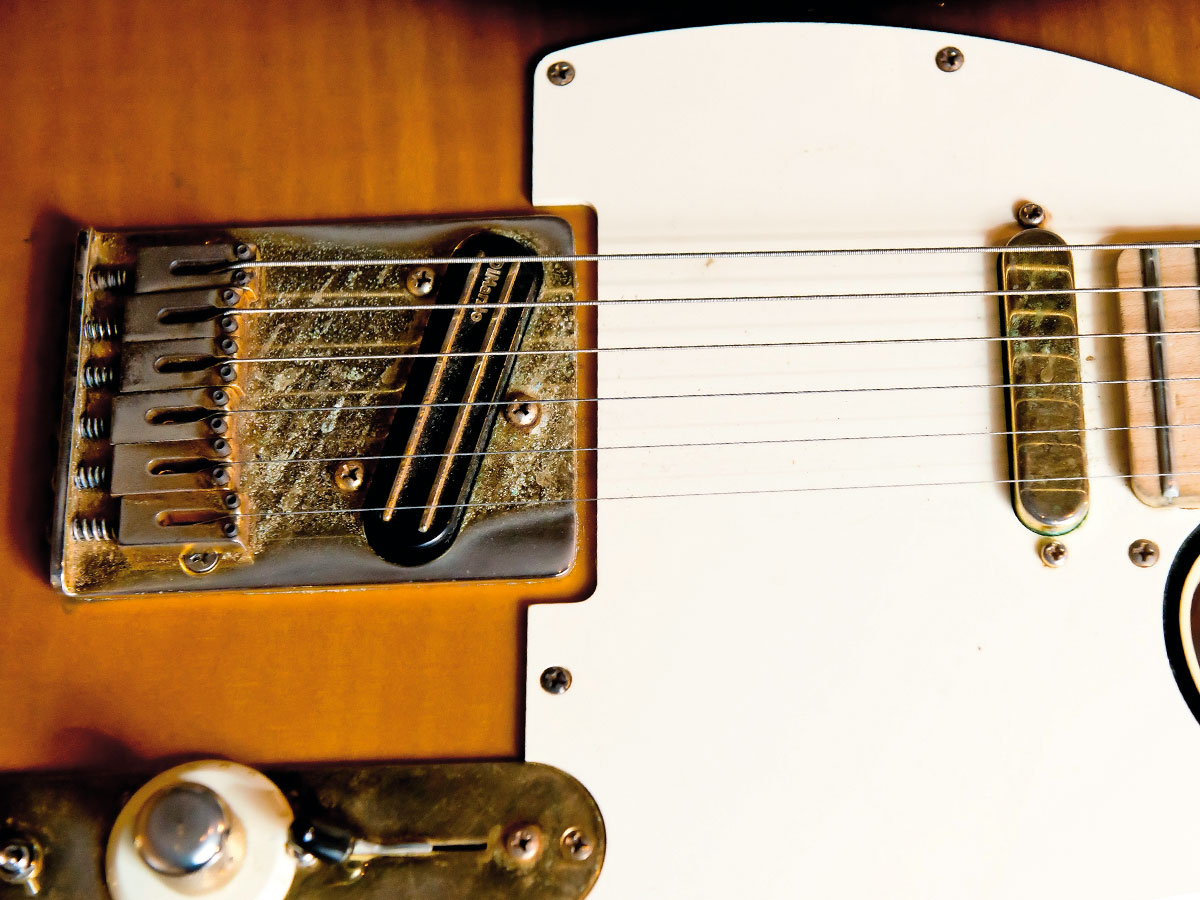
Pickups
“The pickups are made by DiMarzio and in the neck, you have the Twang King Neck, and in the bridge, you have The Chopper T Bridge.
"It’s a higher output than a standard Telecaster pickup, but it’s not nearly as high- output as some of the humbuckers that you hear. It allows me to still get a Telecaster sound when I roll the volume down. Then, when I roll the volume up, it’s a little more aggressive than the average Telecaster.”
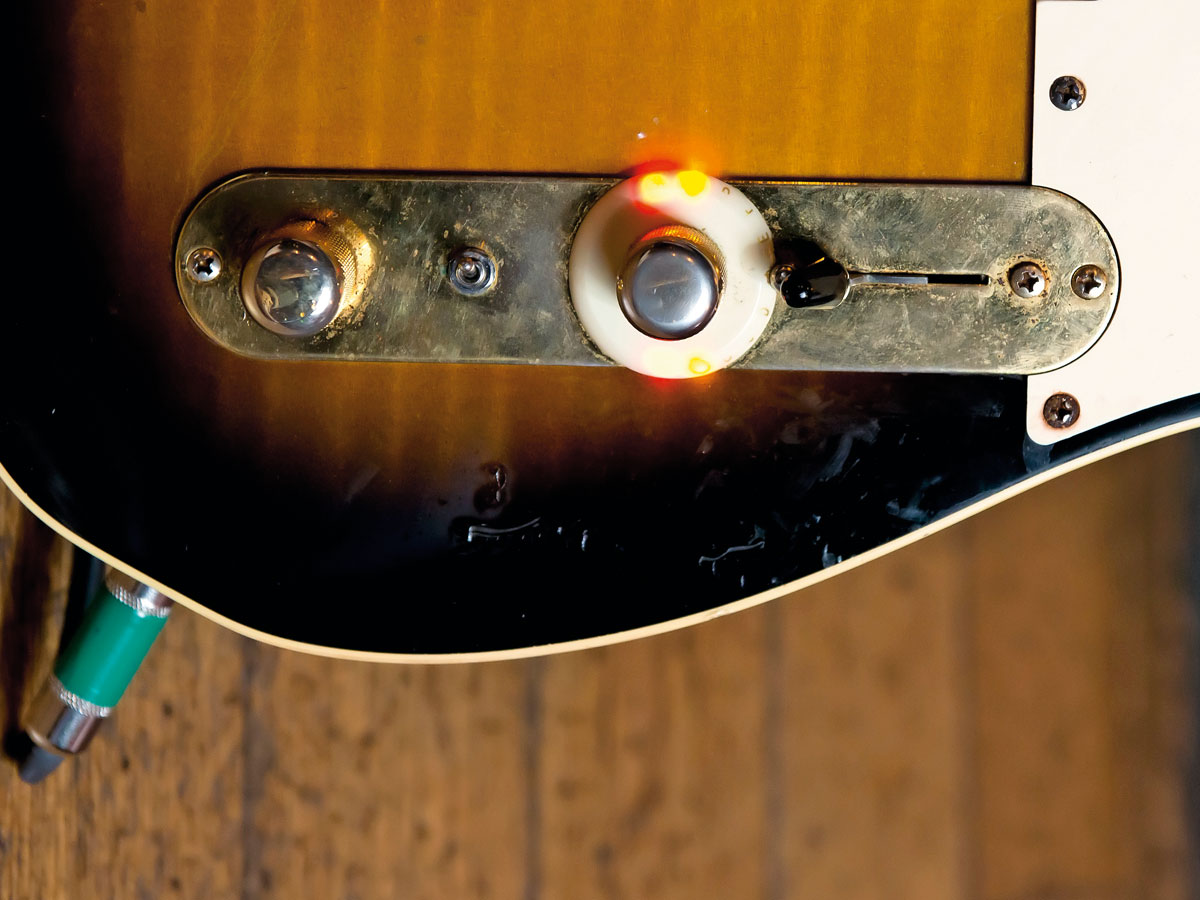
Electronics
“The electronics are pretty simple. The controls are just [the traditional] bridge, middle and neck switching.
"However, the tone knob is not just a tone knob. It’s a series/parallel switch for the middle position, so that gives you an extra tonality.
"The other thing that is aftermarket on the guitar is this white disc, which is a built-in guitar tuner. If I flick the switch next to it, it lights up and I can check my tuning. It mutes the input. If I’m in the dressing room, or even onstage between songs, I can check my tuning very quickly and it’s very accurate.”
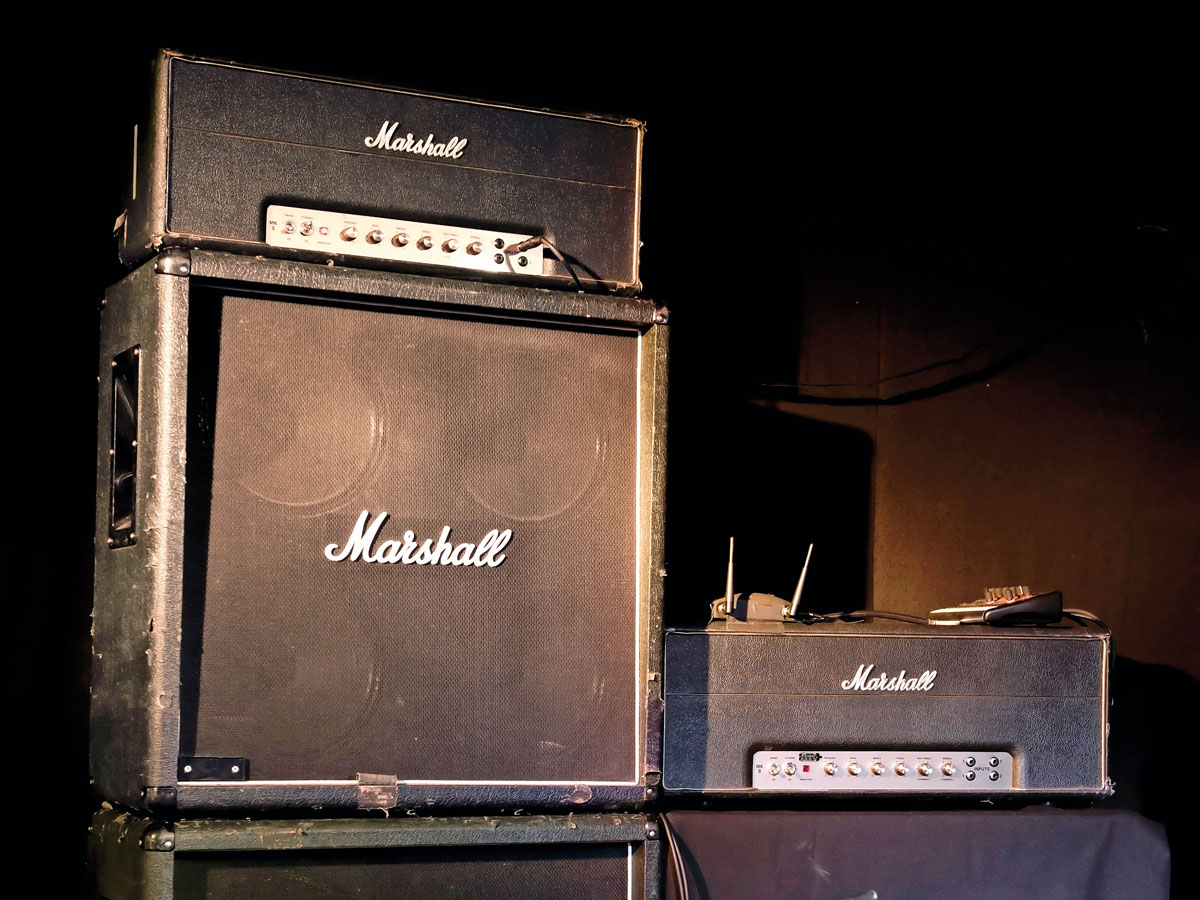
Marshall 1959SLP Plexi Head
“Normally, when I’m on my own gear - this is rented gear - I use the Marshall HW, which is a 100-watt Plexi, and it’s hand-wired. I don’t have that with me here in London, so we rented the 100-watt Super Lead Plexi.
"I like it because it’s a very simple amp. It’s loud and it’s very percussive, which is important for me, because I play with my fingers, so I need an amp that responds [to dynamic playing]. If I play harder, I want it to be louder, if I play soft, I want it tobequiet.Thisampdoesthatverywelland that’s why I gravitate towards these.
“I’ve run them many different ways. I used to jump the channels [the process of patching the amp’s two inputs together to double the available gain] but lately, I’m finding that I’m getting a better sound just by plugging into the second channel, the top input. Then I’m running the treble, the middle and the bass all the way up, presence is about halfway and then the volume just depends on the room.
“Because of the overdrive pedal I’m using, I can actually have this amp relatively low and still get a good aggressive overdrive. Normally, to get these amps to give a good overdrive, you crank ’em, which I do in a larger room, but because of the pedal I designed, I’m able to get the sound I want and not have to drive the amp quite as hard as I used to.”
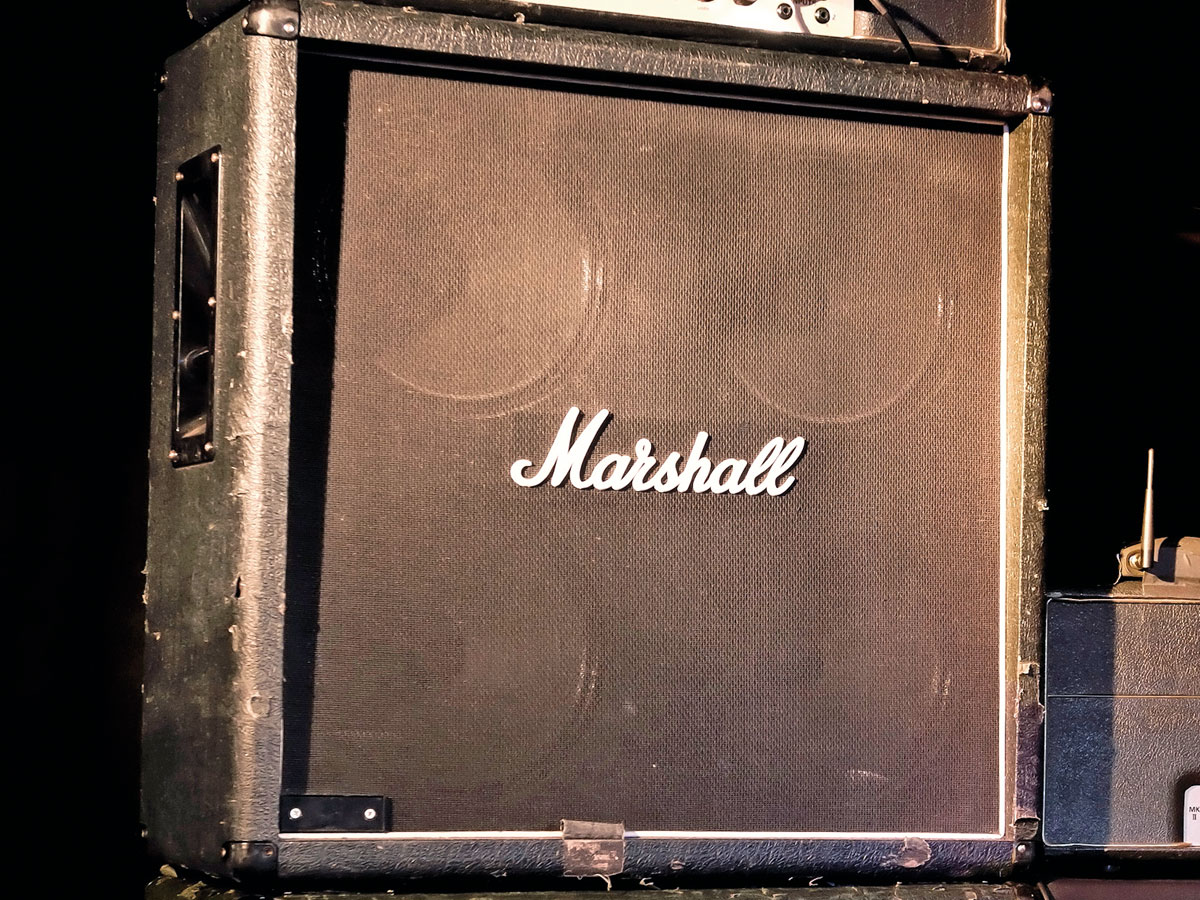
Cabs
“As for the speakers, I’m using the 30-watt Celestions. I like them more than the 70-watt, because they have a smaller cone and somehow that changes the sound. Years ago, I AB’d a bunch of cabinets and I went through the 25-watt speakers, the 30s and the 70s and, for whatever reason, I preferred the 30s. I don’t even remember why, but now that’s what I always ask for when I don’t have my own rig.”
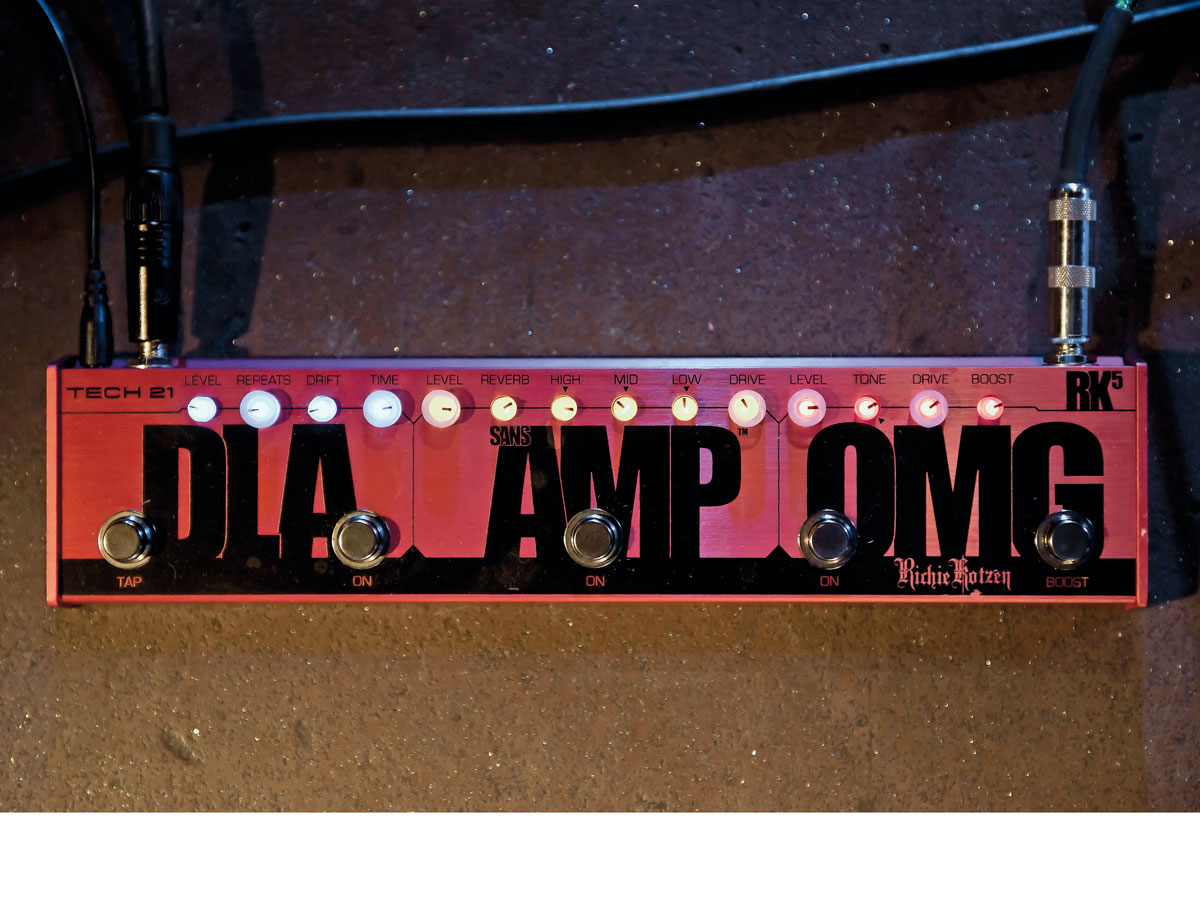
Tech 21 Fly Rig 5
“Years ago, I had this idea to take an overdrive and a delay pedal and put it in one box, because I was doing a lot of travelling and a lot of fly dates where I was in and out and I didn’t want to have to deal with cables.
"I made this black box that had two switches that controlled the reverb and tremolo of the amp, with another two switches for the delay and another two switches for the overdrive. All of the components were inside one unit, hard-wired together and it was very convenient.
"Now I’ve teamed up with Tech 21 and we’ve found a way to make this in a much more professional - and more reliable - way. It’s called the Fly Rig and this particular Fly Rig is my personal signature model.
"We spent about six months working on it to try and get the voicing correct for the distortion. If you look at it you see there are five buttons here. I’ll deal with the overdrive first...”
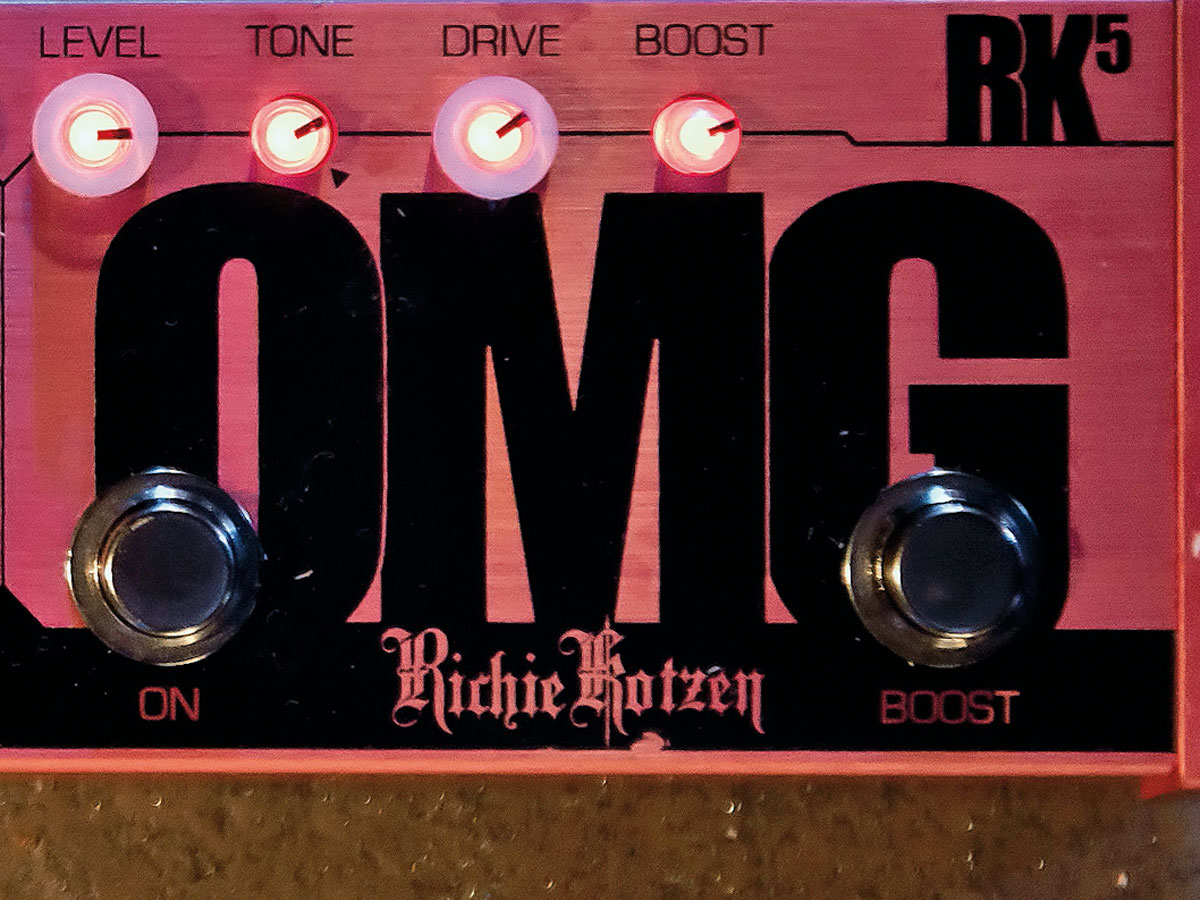
Overdrive section
“The ‘on’ button turns the overdrive on and off. Then you have the level, tone and drive control. The tone control works pretty much like the tone control on a guitar, where you’re actually removing the treble.
"We voiced it so that when it was somewhere around the middle, it sounded how I wanted it to sound - meaning you then have the option to add or subtract treble. It also has a boost function that you can use with the initial stage, or without.
"So, for example, you can set the overdrive to be your aggressive tone with the volume full-out on the guitar and you can do solos, then, if you need a little more to push it over the edge, you can turn the boost on.
"Or you can do the opposite and leave the boost on [independently] and then boost the amp [by engaging the overdrive circuit] for a different kind of distortion - so it’s a pretty flexible situation.”
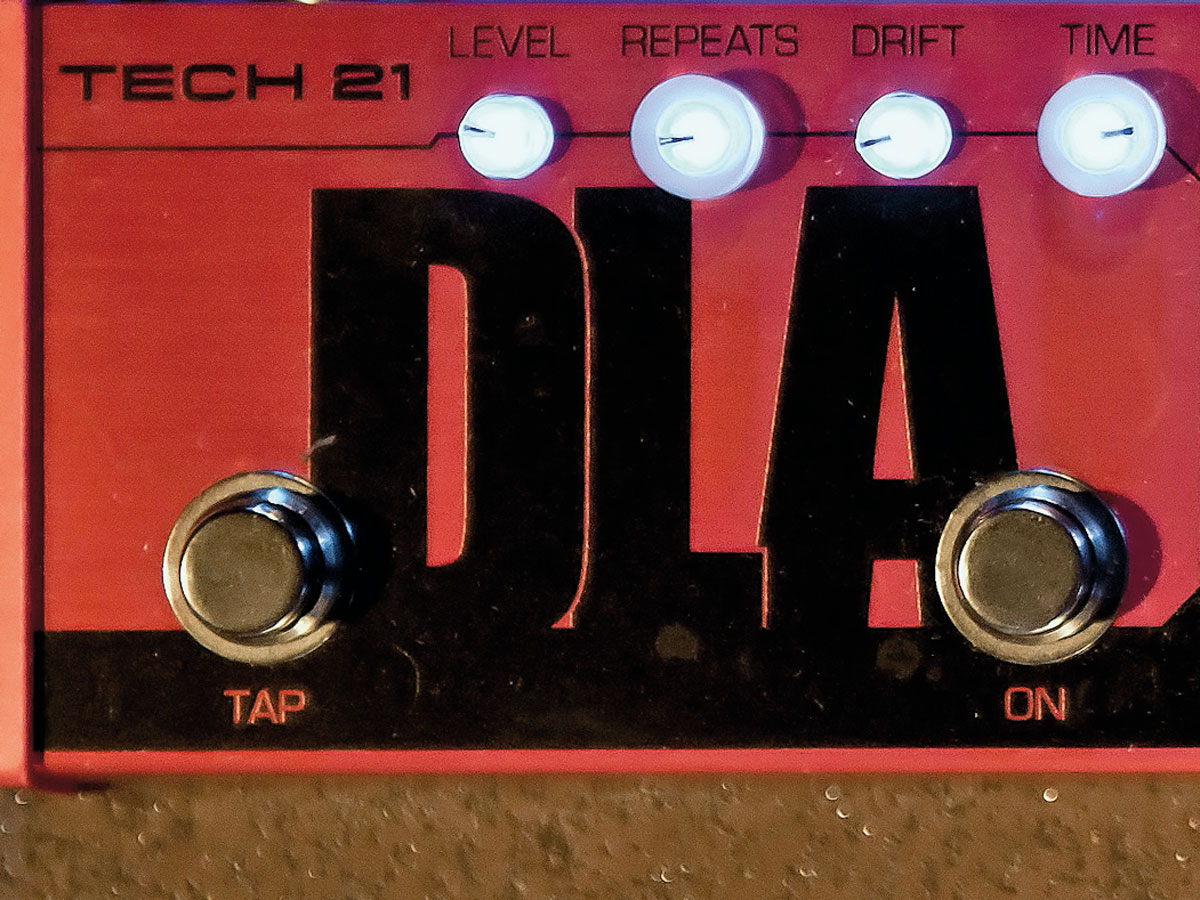
Delay section
“Over on the left is the delay. Again, the ‘on’ switch turns the delay effect on and off, then on the left you have a tap-tempo switch, which I use all of the time.
"You set the tempo of the song - once the drums start, or if I start it - and that way I can have the delay be in time with what I’m playing. If you notice here too, there’s also a ‘drift’ control. If you turn that on, it’ll give a slight chorusing effect.”
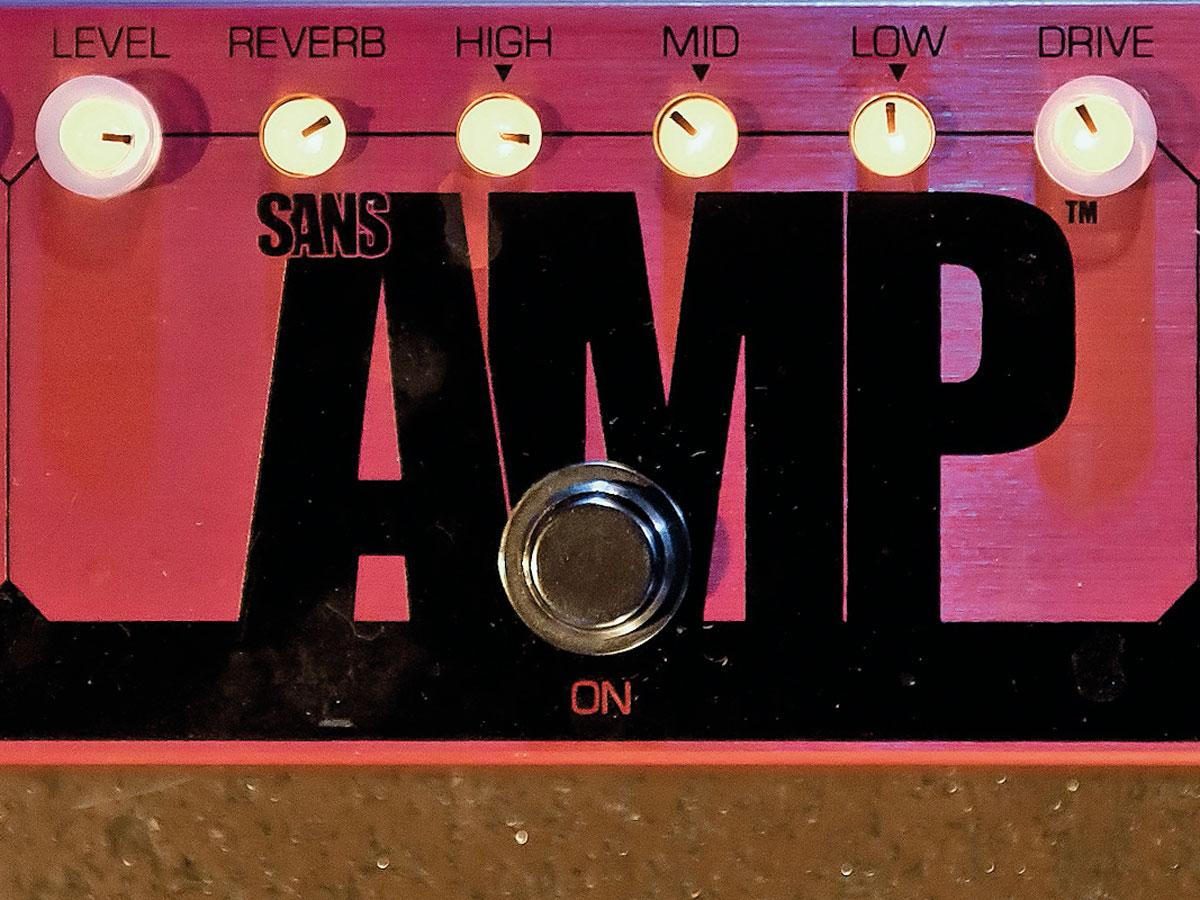
Sansamp
“In the middle, the company, Tech21, invented the SansAmp [an all-analogue amp and speaker emulator], so we decided to put a SansAmp in here as an extra option. Even if you don’t use the SansAmp, if you set it to neutral, you can still use the reverb circuit and use the middle ‘on’ footswitch as a reverb, which is what I do most of the time. Or, if you’re doing a fly date and you’re on an amp that isn’t what you’d normally play through, the SansAmp can be used to change the voicing of the amp to something that’s more like what you’re used to.”
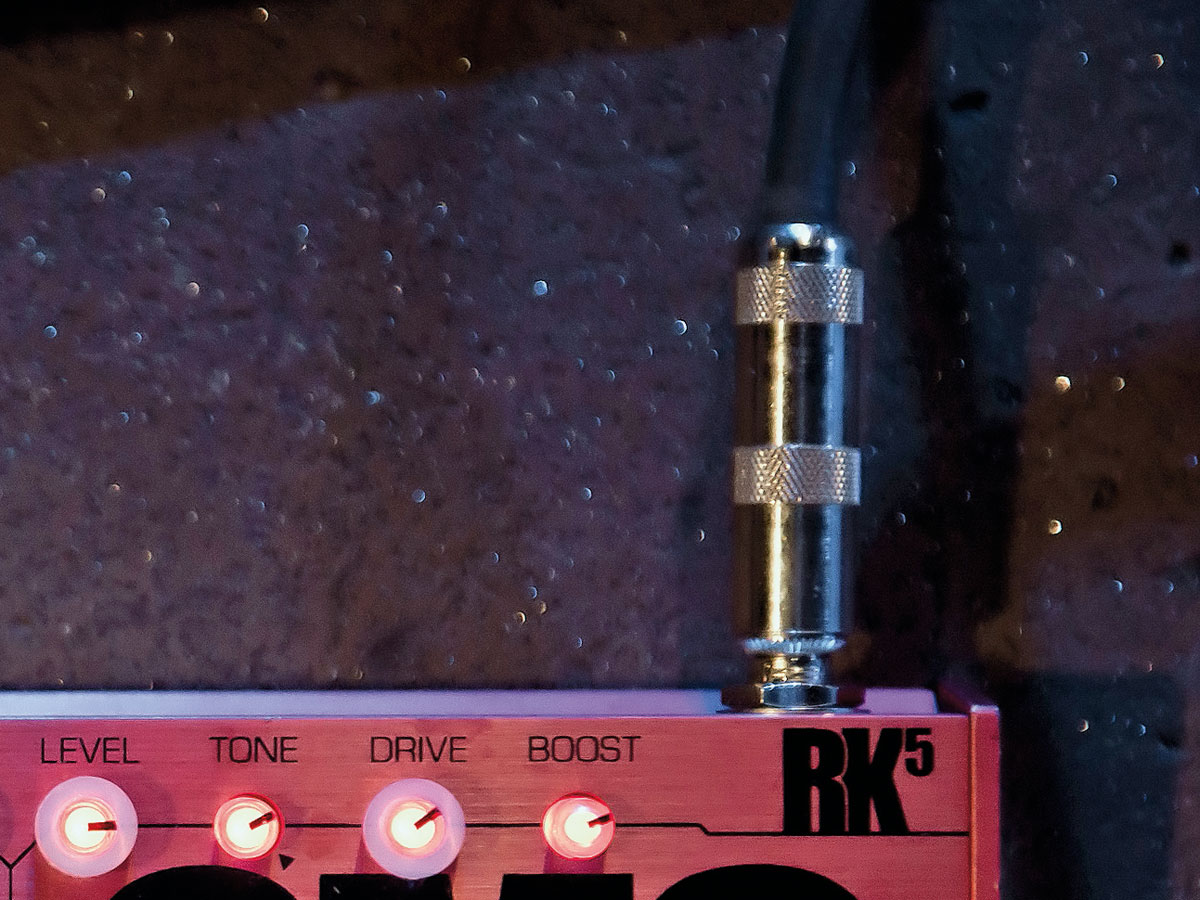
Phantom power mod
“The final thing that we did on the FlyRig - and this modification will not be on the production models, this is something we did for mine - was adding phantom power.
“Now, when you plug in a stereo quarter-inch cable [to the Fly Rig’s input] you have your audio going through there, but at the same time, it’s sending DC voltage to the wah, so the wah is seeing power from the Fly Rig.
“To make that happen, you have to modify the wah, and modify the pedal, but once you do that you don’t need a battery or an adaptor for the wah pedal.”
Matt is a freelance journalist who has spent the last decade interviewing musicians for the likes of Total Guitar, Guitarist, Guitar World, MusicRadar, NME.com, DJ Mag and Electronic Sound. In 2020, he launched CreativeMoney.co.uk, which aims to share the ideas that make creative lifestyles more sustainable. He plays guitar, but should not be allowed near your delay pedals.
